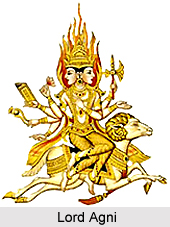 Angiras refers to a category of incantations in the Atharva Veda which comprise curses, exorcisms against demons, wizards and enemies (Abhicarikani). A number of charms of healing can also be placed in this class as they contain exorcism against the demon of diseases. Of this kind is, among other things, also the second half of Book XVI, which contains an exorcism against nightmare in which this demon is told to visit the enemies. In these exorcisms, no difference is made between demons and malicious wizards and witches, and against them, Lord Agni especially, the fire as a demon-destroyer, is called to the rescue. Numerous popular names of demons, otherwise quite unknown, are found in these hymns.
Angiras refers to a category of incantations in the Atharva Veda which comprise curses, exorcisms against demons, wizards and enemies (Abhicarikani). A number of charms of healing can also be placed in this class as they contain exorcism against the demon of diseases. Of this kind is, among other things, also the second half of Book XVI, which contains an exorcism against nightmare in which this demon is told to visit the enemies. In these exorcisms, no difference is made between demons and malicious wizards and witches, and against them, Lord Agni especially, the fire as a demon-destroyer, is called to the rescue. Numerous popular names of demons, otherwise quite unknown, are found in these hymns.
Thus once again there is seen here the view that, deeply rooted in the popular belief, that disease and misfortune can be used not only by demons, but also by malicious people who are endowed with magic power. The magic by means of which these bad people work evil, is often personified in the songs, and a magic antidote-a healing herb, an amulet, a talisman-is confronted with it. The spells and songs connected with this hostile magic and its magic antidotes are often distinguished by a raciness and ferocity which are not without a certain beauty. In any case, in some of these curses and exorcisms of the Atharva Veda, there is more good popular poetry than in most of the sacrificial songs and prayers of the Rig Veda.
Mention may be made here of the magnificent hymn to Lord Varuna. The first half of this hymn celebrates the almighty power and omniscience of God in a language which is extremely rarely heard in India. The second half of the hymn is a vigorous exorcism formula against liars and libellers, of the kind found scattered all over the Rig Veda. This is one of the best constructed songs in all of Vedic literature which expresses the divine omniscience in such impressive words.
Thus discussed are the Angiras of the Atharva Veda.













